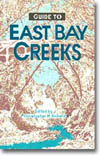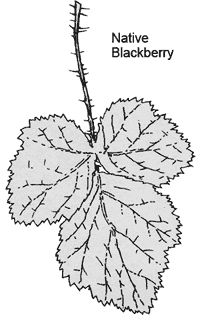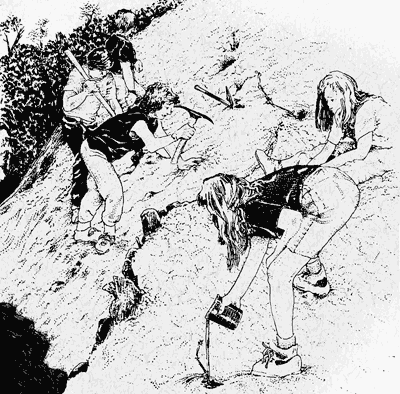GUIDE TO EAST BAY CREEKS
Chapter Seven
Future Options
 People have begun to appreciate the ecological and aesthetic values of streams and to understand better how and why they function. With this knowledge, they are pursuing improved stewardship of our East Bay creeks that incorporates appearance, recreation, and habitat values with the function of the old-fashioned technological fixes.
People have begun to appreciate the ecological and aesthetic values of streams and to understand better how and why they function. With this knowledge, they are pursuing improved stewardship of our East Bay creeks that incorporates appearance, recreation, and habitat values with the function of the old-fashioned technological fixes.
However, a challenge remains — the condition of any stream is a direct expression of the condition of the stream's watershed. A perfectly natural stream can exist only in a perfectly natural watershed. Since an urbanized watershed is not natural, the stream in an urban watershed must be to some degree managed. And the degree to which a stream can be kept nearly natural depends on the ongoing cooperation of the citizenry throughout the watershed.
A crucial step in preserving the remaining natural stream courses is recognizing the variable nature of streams. To adjust to this, we must preserve enough open space for a meandering main channel within a floodplain. Certain communities are now creating riverside parks that can accommodate moderate floods.

However, for these riparian parks to be attractive and safe for recreation, and for them to provide wildlife habitat, they must have clean water. Through both individual and group action, society must dedicate itself to preventing toxic and sewage pollution, stopping erosion, and favoring percolation of rainwater over surface runoff.
In heavily urbanized areas like Berkeley and Oakland, most creeks are already buried or channelized and are hemmed in tightly by development. Here, plans must focus more on restoration. Due to the amount of development that already exists, complete restoration often isn't realistic — all that concrete did solve some very real problems that any restoration project must address. The question then becomes to what degree we can restore creeks to their natural state.
Some people advocate what they call daylighting, digging up buried creeks. A small portion of Strawberry Creek was daylighted in 1982, creating Strawberry Creek Park. In downtown Berkeley, creek activists and the city's Downtown
Plan are calling for restoring another segment of that creek. In other areas, communities are working to protect and restore the fragments of open creeks that still exist.
As communities begin improving their creeks, it becomes necessary to distinguish between mere landscaping and true restoration. Often, projects try to make up for what is lost by creating alien replacement landscapes. Planting non-native trees and grass, and extensively paving people-space and waterways do not restore the function of the stream ecosystem.
The aims of the stream restoration movement are more integral, approximating what existed naturally, with equal emphasis on appearance, function, and the diversity of habitat. Restorationists work to bring back pools, riffles, floodplains, low-flow channels, and native Streamside vegetation — all expressions of the way a creek interacts with the landscape to create habitat. Key to achieving this is balancing runoff to the stream with the stream's capacity to carry water, and balancing erosion throughout the watershed with transport and deposition of sediment.

Creek restoration in urban settings must focus not only on practical and ecological benefits but also on social benefits. When people work together to create neighborhood parks along their creeks, as they are doing in places like Courtland Creek in Oakland, they strengthen human as well as wildlife communities. Creekside trails promote foot travel between the hills and flatlands. Similarly, as people begin identifying pollutants and checking sediment levels, everyone begins to understand the ecological ties between upstream and downstream.
One thing many communities must consider is that, in certain circumstances, while restoring a creek might appear expensive, it turns out that not restoring a creek can cost even more. A traditional engineering solution to erosion or flooding involves channelizing, removing trees, and building culverts. This is costly, averaging about five million dollars per mile. On the other hand, where land is available for a natural floodplain, a non-structural restoration approach costs between $2,000 and $100,000 per mile.
Moreover, restoration can provide dramatic economic benefits beyond the cost savings. Studies have shown that open, natural, aesthetic streams greatly increase property values. Many communities, such as Napa, San Luis Obispo, and Ashland, Oregon, have found that their restored waterways have increased tourism. These projects provide opportunities for inner city youths to earn money and pride working in conservation corps crews restoring urban streams.
--Sarah Pollock & Ann Riley
Chapter 6 Chapter 8
Top of PageTable of ContentsGlossary |